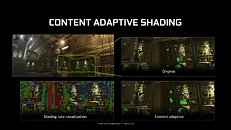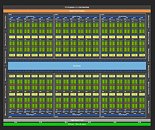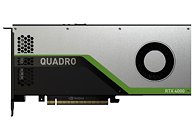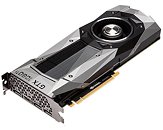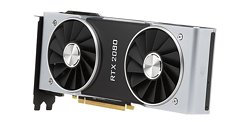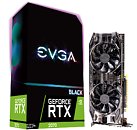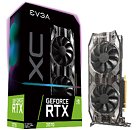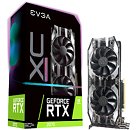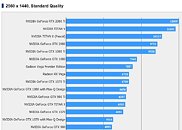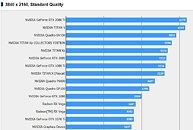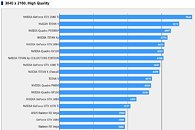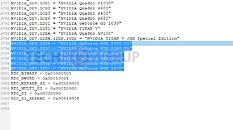
Wolfenstein II: The New Colossus Getting Support for NVIDIA Turing's Adaptive Shading
You may remember that we covered in detail the new technologies being implemented on NVIDIA's new brainchild, Turing, back when the architecture and its whitepaper were initially announced. One of the pieces of technology we talked about back then was Content Adaptive Shading, a new technique that would allow for smart trade-offs in image quality for added performance - potentially allowing for increased overall rendering resolutions at a much lesser impact cost.
The tech is now simply known as Adaptive Shading, and it basically works as a post-process step that looks at previous frames to calculate which determine quality conditions for the next one - lowered detail areas such as skies, flat walls, or even shadowed portions of objects require lesser amounts of shading detail, and thus, their shading rates can be reduced from a per-pixel shading to four pixels per shading ratio. And this new feature, which was originally showcased on MachineGames' Wolfenstein II: The New Colossus, will finally be implemented in working form on that particular game, via a patch that's being released on November 19th. This is the first title to make use of this technology - and hopefully, it isn't the last.
The tech is now simply known as Adaptive Shading, and it basically works as a post-process step that looks at previous frames to calculate which determine quality conditions for the next one - lowered detail areas such as skies, flat walls, or even shadowed portions of objects require lesser amounts of shading detail, and thus, their shading rates can be reduced from a per-pixel shading to four pixels per shading ratio. And this new feature, which was originally showcased on MachineGames' Wolfenstein II: The New Colossus, will finally be implemented in working form on that particular game, via a patch that's being released on November 19th. This is the first title to make use of this technology - and hopefully, it isn't the last.

